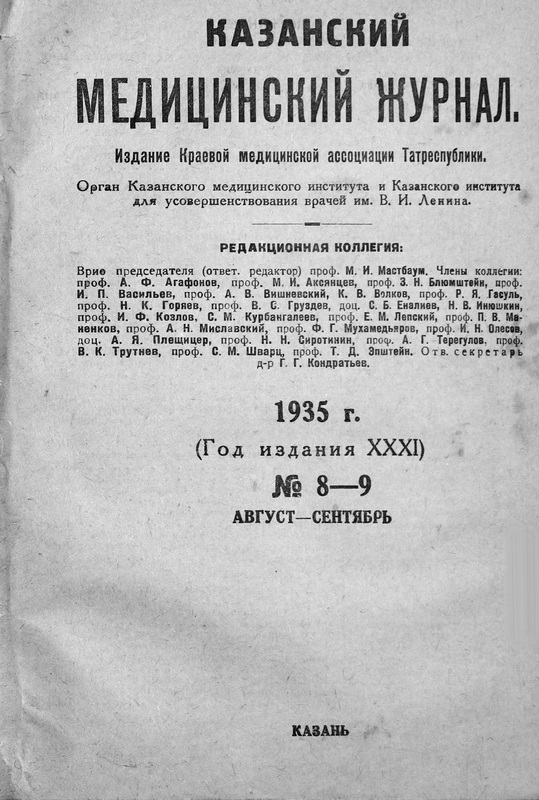Role of cysteine in jaundice hemorrhages
- Issue: Vol 31, No 8-9 (1935)
- Pages: 1114-1114
- Section: Articles
- Submitted: 30.11.2020
- Accepted: 30.11.2020
- Published: 13.08.1935
- URL: https://kazanmedjournal.ru/kazanmedj/article/view/52766
- DOI: https://doi.org/10.17816/kazmj52766
- ID: 52766
Cite item
Full Text
Abstract
The role of calcium, platelets, and other factors that were associated with bleeding was not confirmed in jaundice. Carr and Toote found that the amino acid cysteine was the main factor impeding blood clotting. In obstructive jaundice, this amino acid accumulates in the blood and in in vitro experiments and, when administered to animals, causes a deterioration in blood clotting.
Keywords
Full Text
(Ред. статья jour of the Amer. Med. Ass. от 29/IX 1934 г., стр. 994).
Роль кальция, кровяных пластинок и др. факторов, которые ставились в связь с кровоточивостью, при желтухах не подтвердилась. Carr и Toote нашли, что главным фактором, затрудняющим свертывание крови, является аминокислота цистеин. Эта аминокислота при обструкционных желтухах накапливается в крови и в опытах in vitro и при введении животным вызывает ухудшение свертываемости крови.
Эксперименты с введением бром-бензола показали, что это вещество, комбинируясь с цистеином в форме бром-фенил-меркантановой кислоты, выделяется с мочей и уменьшает в эксперименте наклонность к геморагиям. Но это вещество токсично, поэтому требуются дальнейшие опыты для применения его на человеке. Э. М.
References
Supplementary files







